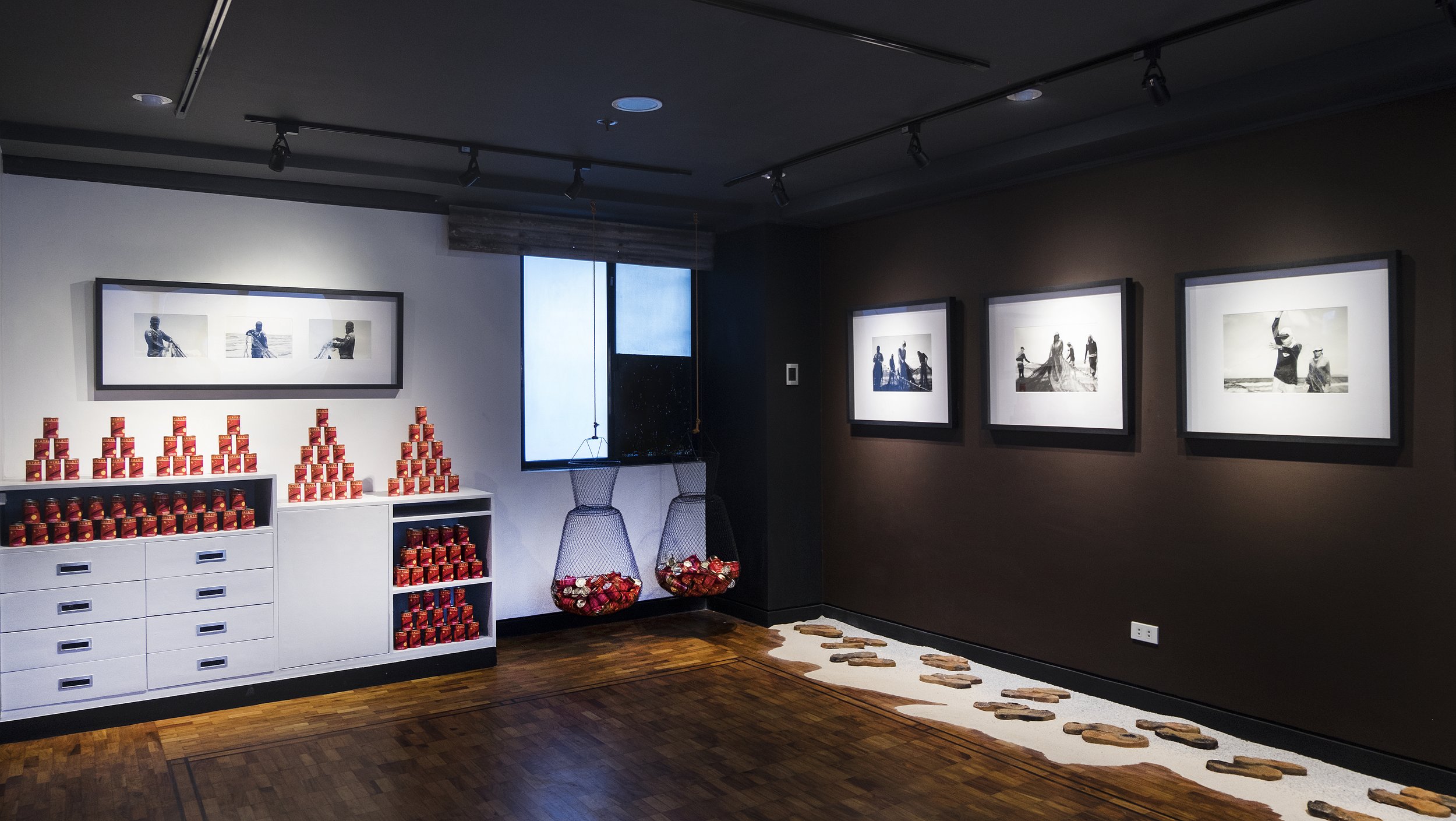
The sea has long been a source of life, identity, and resilience for Filipino fishermen, whose unyielding connection to their waters is now threatened by displacement and political encroachment. In her evocative body of work, Lastierre sheds light on this precarious reality, blending photographic intimacy with biting satire to explore themes of sovereignty, survival, and resistance.
Lastierre’s monochromatic series captures the quiet dignity of fishing communities, whose traditions are etched in the rhythmic labor of casting nets and repairing tools. The stark black-and-white palette evokes both the simplicity of their lives and the weight of their struggles. Through each photograph, we see faces marked by patience and fortitude, individuals whose identity is intricately tied to the sea, even as the waters they rely on become contested spaces.
The installation’s white sand, reminiscent of the controversial dolomite project in Manila Bay, serves as a stark critique of misplaced government priorities. For Lastierre, this artificial beautification, touted as progress, is a symbol of systemic neglect—a betrayal of the very people who depend on the sea for their livelihood and mental well-being.
At the heart of the exhibition is KALAYAAN, a sardine can installation that confronts the audience with the commodification of resources and sovereignty. Wrapped in red packaging, each sardine can becomes a metaphor for power, resistance, and loss. The label, “Manufractured by China,” transforms this ubiquitous household item into a biting commentary on foreign intervention and the fragility of Filipino freedom. Fishing nets—tools of sustenance—become symbols of uncertainty, casting lines into a sea of struggle.
Through her work, Lastierre invites us to confront urgent questions about exploitation, cultural heritage, and the true cost of sovereignty. How much are we willing to lose in exchange for progress? How do we reckon with the forces that seek to “can” not only resources but also futures? Lastierre’s art is both a call to action and a testament to the unbreakable spirit of those who refuse to surrender their home.
Press: Rappler





